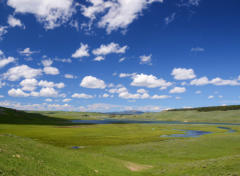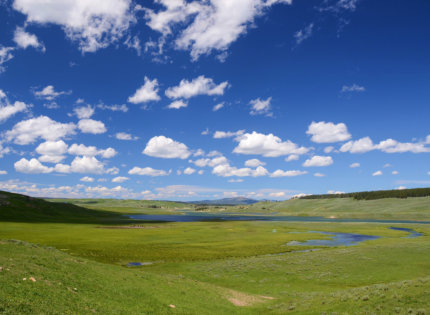
HISTORY ONLINE 24/7/365
WORLD WAR II
World War II in U. S. History 2
The biggest conflict in human history.Resources:
Study Guide History Channel -- World War II page National World War II Museum International World War II Museum National World War II Memorial National D-Day Memorial in Bedford, Va National Geographic Kids World War II Page World War II on the BBC website CLICK HERE to search military records held at the National Archives CLICK HERE for a guide to World War II resources at the Library of Congress Pearl Harbor Historic Sites website Man in the Street Interviews recorded after the attack on Pearl Harbor Navy Times article on Donald Stratton, Pearl Harbor survivor from the Arizona Is “Rosie the Riviter” really Rosie the Riviter? Click here for the real story! Kurt Klein Obit While we usually usually study music from the time period, and you wil find some on the Pop Culture page, the National World War II Museum recently published a list of more recent hits about World War II. Click here to readClick here to go to the videos at the bottom of the page:
Watch review lessons from VA TV Classroom and WHRO on emediaVA:
CLICK HERE to watch a review on the Causes of World War II CLICK HERE to watch a review on the main events of World War IISOL Information:
Political and economic conditions in Europe following World War I led to the rise of fascism and to World War II. The rise of fascism threatened peace in Europe and Asia. As conflict grew in Europe and Asia, American foreign policy evolved from neutrality to direct involvement. Causes of World War II • Economic devastation in Europe resulting from World War I: o Worldwide depression o High war debt owed by Germany o High inflation o Massive unemployment • Political instability marked by the rise of Fascism: o Fascism is a political philosophy in which total power is given to a dictator; individual freedoms are denied; and nationalism and, often, racism are emphasized. o Fascist dictators included Adolf Hitler (Germany), Benito Mussolini (Italy), and Hideki Tojo (Japan). o These dictators led the countries that became known as the Axis Powers. The Allies • Democratic nations (the United States, Great Britain, Canada) were known as the Allies. The Soviet Union joined the Allies after being invaded by Germany. • Allied leaders included Franklin D. Roosevelt and, later, Harry S. Truman (United States), Winston Churchill (Great Britain), and Joseph Stalin (Soviet Union). Gradual change in American policy from neutrality to direct involvement • Isolationism (Great Depression, legacy of World War I) • Economic and military aid to Allies (Lend-Lease program) • Direct involvement in the war War in the Pacific • Rising tension developed between the United States and Japan because of Japanese aggression in East Asia and the Pacific region. • On December 7, 1941, Japan attacked the United States at Pearl Harbor. • The United States declared war on Japan. • Germany declared war on the United States. Despite initial Axis success in both Europe and the Pacific, the Allies persevered and ultimately defeated Germany and Japan. The Holocaust is an example of prejudice, discrimination, and genocide taken to the extreme. Major events and turning points of World War II • Germany invaded Poland, setting off war in Europe. The Soviet Union also invaded Poland and the Baltic nations. • Germany invaded France and captured Paris. • Germany bombed London, and the Battle of Britain began. • The United States gave Britain war supplies and old naval warships in return for military bases in Bermuda and the Caribbean (Lend-Lease). • Japan bombed Pearl Harbor. • After Japan bombed Pearl Harbor, Germany declared war on the United States. • The United States declared war on Japan and Germany. • The United States was victorious over Japan in the Battle of Midway. This victory was the turning point of the war in the Pacific. • Germany invaded the Soviet Union. The Soviet Union defeated Germany at Stalingrad, marking the turning point of the war in Eastern Europe. • American and other Allied troops landed in Normandy, France, on D-Day to begin the liberation of Western Europe. • The United States dropped two atomic bombs on Japan (Hiroshima and Nagasaki) in 1945, forcing Japan to surrender and ending World War II. The Holocaust • Anti-Semitism • Aryan supremacy • Systematic attempt to rid Europe of all Jews • Tactics: o Boycott of Jewish stores o Discriminatory laws o Segregation o Ghettos o Imprisonment and killing of Jews and others in concentration camps and death camps • Liberation by Allied forces of Jews and others who survived in concentration camps World War II affected every aspect of American life. Americans were asked to make sacrifices in support of the war effort and the ideals for which Americans fought. American involvement in World War II brought an end to the Great Depression. Factories and workers were needed to produce goods to win the war. Thousands of American women (e.g., Rosie the Riveter) took jobs in defense plants during the war. Americans at home supported the war by conserving and rationing resources (e.g., victory gardens, ration books, scrap drives). The need for workers temporarily broke down some racial barriers (e.g., hiring in defense plants), although discrimination against African Americans continued. While many Japanese Americans served in the armed forces, others were treated with distrust and prejudice, and many were forced into internment camps in the United States.Videos:
WORLD WAR 2 ERA FILMS -- (Note: Hollywood, government, and propeganda films from this era reflect common cultural and societal views and prejudices of that time. As attitudes have changed in the dacades since these films were made, some comments, jokes, or images may seem tone-deaf if not offensive in today's culture. I've featured them on the site to urately show what people were thinking about and listening to at the time, not to endorse those views. Watch them at your own discression and parents/guardians my wish to preview and/or discuss them first. Wartime government films! -- Food Rationing: Pop Culture of World War II: As an example of old time radio drama, click the youtube below to listen to a wartime episode of the long-running series Suspense. After the episode, keep listening for an important government announcement about milage rationing! Actors talk about their childhood experiences in Japanese internment camps. Enjoy these virtual field trips from the National WW2 Museum in New Orleans.U.S. Mapping Games:
Click to start here with a simple tutorial Drag and Drop by Region Drag and Drop Click on the State Drag and Drop (Harder)

PHYSICAL REGIONS
Looking for the physical regions
of North America from the
Virgina Standards of Learning
for U. S. History I?




































HISTORY ONLINE 24/7/365
mrbower.com
WORLD WAR II
World War II in U. S. History 2
The biggest conflict in human history.Resources:
Study Guide History Channel -- World War II page National World War II Museum International World War II Museum National World War II Memorial National D-Day Memorial in Bedford, Va National Geographic Kids World War II Page World War II on the BBC website CLICK HERE to search military records held at the National Archives CLICK HERE for a guide to World War II resources at the Library of Congress Pearl Harbor Historic Sites website Man in the Street Interviews recorded after the attack on Pearl Harbor Navy Times article on Donald Stratton, Pearl Harbor survivor from the Arizona Is “Rosie the Riviter” really Rosie the Riviter? Click here for the real story! Kurt Klein Obit While we usually usually study music from the time period, and you wil find some on the Pop Culture page, the National World War II Museum recently published a list of more recent hits about World War II. Click here to readClick here to go to the videos at the
bottom of the page:
Watch review lessons from VA TV
Classroom and WHRO on emediaVA:
CLICK HERE to watch a review on the Causes of World War II CLICK HERE to watch a review on the main events of World War IISOL Information:
Political and economic conditions in Europe following World War I led to the rise of fascism and to World War II. The rise of fascism threatened peace in Europe and Asia. As conflict grew in Europe and Asia, American foreign policy evolved from neutrality to direct involvement. Causes of World War II • Economic devastation in Europe resulting from World War I: o Worldwide depression o High war debt owed by Germany o High inflation o Massive unemployment • Political instability marked by the rise of Fascism: o Fascism is a political philosophy in which total power is given to a dictator; individual freedoms are denied; and nationalism and, often, racism are emphasized. o Fascist dictators included Adolf Hitler (Germany), Benito Mussolini (Italy), and Hideki Tojo (Japan). o These dictators led the countries that became known as the Axis Powers. The Allies • Democratic nations (the United States, Great Britain, Canada) were known as the Allies. The Soviet Union joined the Allies after being invaded by Germany. • Allied leaders included Franklin D. Roosevelt and, later, Harry S. Truman (United States), Winston Churchill (Great Britain), and Joseph Stalin (Soviet Union). Gradual change in American policy from neutrality to direct involvement • Isolationism (Great Depression, legacy of World War I) • Economic and military aid to Allies (Lend-Lease program) • Direct involvement in the war War in the Pacific • Rising tension developed between the United States and Japan because of Japanese aggression in East Asia and the Pacific region. • On December 7, 1941, Japan attacked the United States at Pearl Harbor. • The United States declared war on Japan. • Germany declared war on the United States. Despite initial Axis success in both Europe and the Pacific, the Allies persevered and ultimately defeated Germany and Japan. The Holocaust is an example of prejudice, discrimination, and genocide taken to the extreme. Major events and turning points of World War II • Germany invaded Poland, setting off war in Europe. The Soviet Union also invaded Poland and the Baltic nations. • Germany invaded France and captured Paris. • Germany bombed London, and the Battle of Britain began. • The United States gave Britain war supplies and old naval warships in return for military bases in Bermuda and the Caribbean (Lend-Lease). • Japan bombed Pearl Harbor. • After Japan bombed Pearl Harbor, Germany declared war on the United States. • The United States declared war on Japan and Germany. • The United States was victorious over Japan in the Battle of Midway. This victory was the turning point of the war in the Pacific. • Germany invaded the Soviet Union. The Soviet Union defeated Germany at Stalingrad, marking the turning point of the war in Eastern Europe. • American and other Allied troops landed in Normandy, France, on D-Day to begin the liberation of Western Europe. • The United States dropped two atomic bombs on Japan (Hiroshima and Nagasaki) in 1945, forcing Japan to surrender and ending World War II. The Holocaust • Anti-Semitism • Aryan supremacy • Systematic attempt to rid Europe of all Jews • Tactics: o Boycott of Jewish stores o Discriminatory laws o Segregation o Ghettos o Imprisonment and killing of Jews and others in concentration camps and death camps • Liberation by Allied forces of Jews and others who survived in concentration camps World War II affected every aspect of American life. Americans were asked to make sacrifices in support of the war effort and the ideals for which Americans fought. American involvement in World War II brought an end to the Great Depression. Factories and workers were needed to produce goods to win the war. Thousands of American women (e.g., Rosie the Riveter) took jobs in defense plants during the war. Americans at home supported the war by conserving and rationing resources (e.g., victory gardens, ration books, scrap drives). The need for workers temporarily broke down some racial barriers (e.g., hiring in defense plants), although discrimination against African Americans continued. While many Japanese Americans served in the armed forces, others were treated with distrust and prejudice, and many were forced into internment camps in the United States.Videos:
WORLD WAR 2 ERA FILMS -- (Note: Hollywood, government, and propeganda films from this era reflect common cultural and societal views and prejudices of that time. As attitudes have changed in the dacades since these films were made, some comments, jokes, or images may seem tone-deaf if not offensive in today's culture. I've featured them on the site to urately show what people were thinking about and listening to at the time, not to endorse those views. Watch them at your own discression and parents/guardians my wish to preview and/or discuss them first. Wartime government films! -- Food Rationing: Pop Culture of World War II: As an example of old time radio drama, click the youtube below to listen to a wartime episode of the long-running series Suspense. After the episode, keep listening for an important government announcement about milage rationing! Actors talk about their childhood experiences in Japanese internment camps. Enjoy these virtual field trips from the National WW2 Museum in New Orleans.U.S. Mapping Games:
Click to start here with a simple tutorial Drag and Drop by Region Drag and Drop Click on the State Drag and Drop (Harder)

PHYSICAL REGIONS
Looking for the physical regions of
North America from the Virgina
Standards of Learning for U. S.
History I?



































































